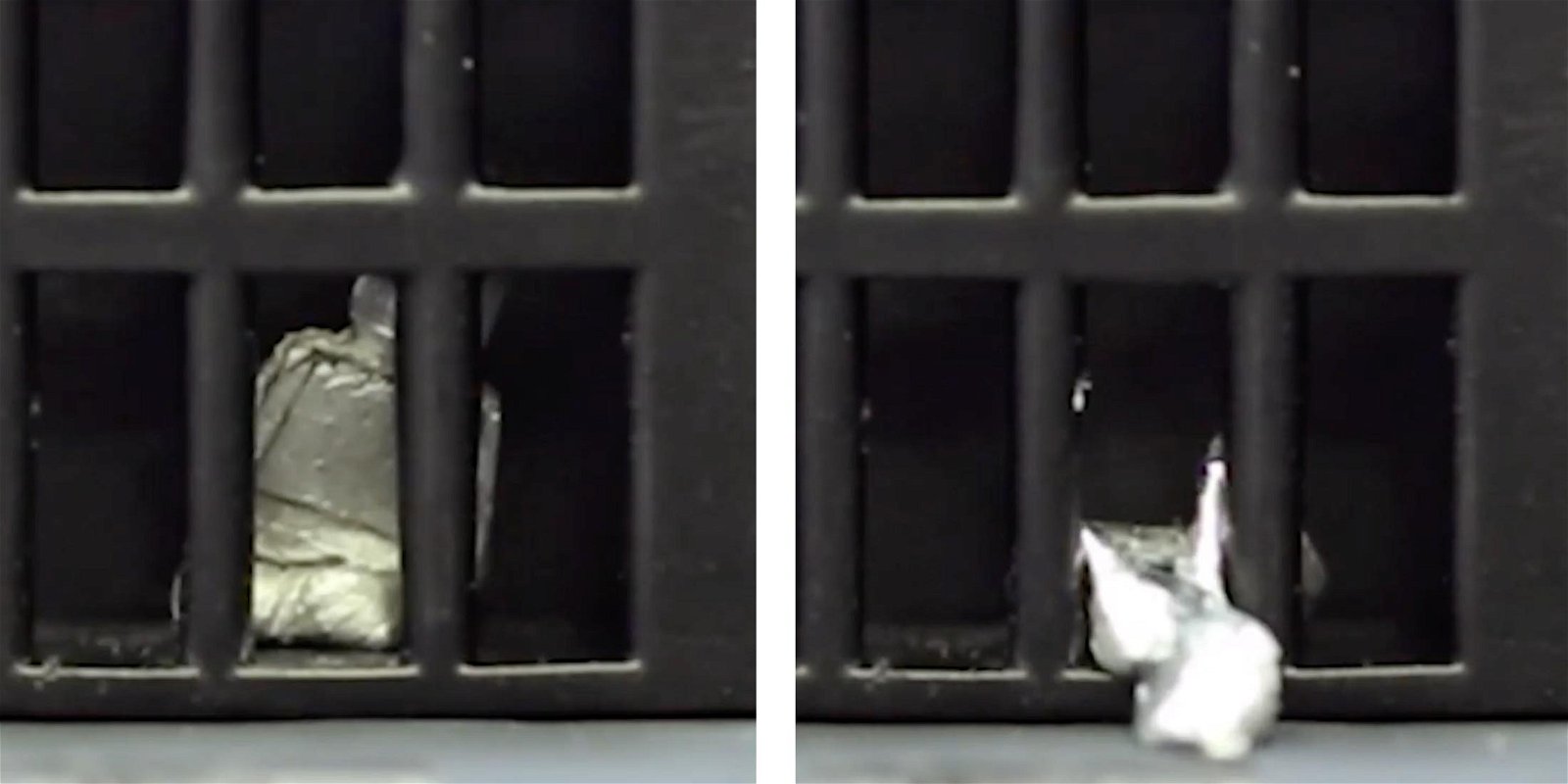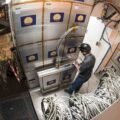A new video shows a human-shaped ‘robot’ escaping from a miniature jail by transforming itself into a liquid metal state and then slipping through the bars, evoking imagery from popular films like Terminator 2.
Eerily, just like the villain from the aforementioned movie, the robot used in the demonstration was also able to coalesce back into its original shape once it was free.
To accomplish a task right out of a science fiction movie, researchers from Carnegie Mellon University and The Chinese University of Hong Kong had to create an entirely new type of material that includes magnets and metal. Dubbed a “magnetoactive solid-liquid phase transitional machine,” the futuristic material was made by embedding magnetic particles into a base of gallium. The researchers chose gallium due to its low melting point of only 85.6 °F (or 29.8 °C).
You can see a video featuring this fascinating–and unusual–accomplishment below:
Magnetic Particles and Gallium are the secret ingredients in a Shape Shifting liquid metal robot
According to the researchers involved, the magnetic particles offer other benefits, too.
“The magnetic particles here have two roles,” explained senior author and mechanical engineer Carmel Majidi of Carnegie Mellon University. “One is that they make the material responsive to an alternating magnetic field, so you can, through induction, heat up the material and cause the phase change.”
Along with this unique heating ability that doesn’t require an outside heating source to change from a solid state to a liquid one, Majidi says the magnetic particles also give the robots the ability to move in response to the magnetic field. This is particularly significant since the primary function of any robot is the ability to move around and perform various functions.
“Giving robots the ability to switch between liquid and solid states endows them with more functionality,” says Chengfeng Pan, an engineer at The Chinese University of Hong Kong who led the study.
Liquid Metal Robot Passes a wide range of tests
To understand the limits of their new shape-shifting liquid metal robot, the researchers put it through a number of tests. This included using magnetic fields to make the robot jump over moats, climb walls, and even split itself into two smaller robots to move other objects around before coalescing back together.
“Now, we’re pushing this material system in more practical ways to solve some very specific medical and engineering problems,” said Pan.
To test some of those potential bio-medical applications, the team used the robot to remove a foreign object from a model of a human stomach and then deliver on-demand drugs to the same stomach.
“Future work should further explore how these robots could be used within a biomedical context,” said Majidi, “but much more study will be required to delve into how this could actually be used for drug delivery or for removing foreign objects.”
To show how it could help screw together parts in hard-to-reach places, the team melted some of the metal into the threaded screw socket and then allowed it to harden in place. They even used the conductive ability of their liquid metal robot to show how it could perform soldering tasks in extremely tight confines by melting into them and then re-hardening to perform its tasks.
Extreme Liquid Phase Allows For Sci-Fi Jailbreak
In the case of the video provided by researchers, the ability to change from a solid state to a liquid metal state allows the robot-shaped metal to escape a tiny prison. This is due to what the researchers describe as an “extremely liquid phase.” Other shape-shifting materials typically have a liquid phase that is much more viscous than the newly created material.
“What we’re showing are just one-off demonstrations, proofs of concept,” said Majidi.
Of course, the robot from the video wasn’t able to travel back in time or track down a tween-aged John Connor. But given its ability to shape-shift from a solid metal state to a liquid one and then back to a solid, it’s pretty much guaranteed that if the robot could talk, it would say, “I’ll be back!”
Christopher Plain is a novelist, comedian, and Head Science Writer at The Debrief. Follow and connect with him on Twitter, learn about his books at plainfiction.com, or email him directly at christopher@thedebrief.org.

